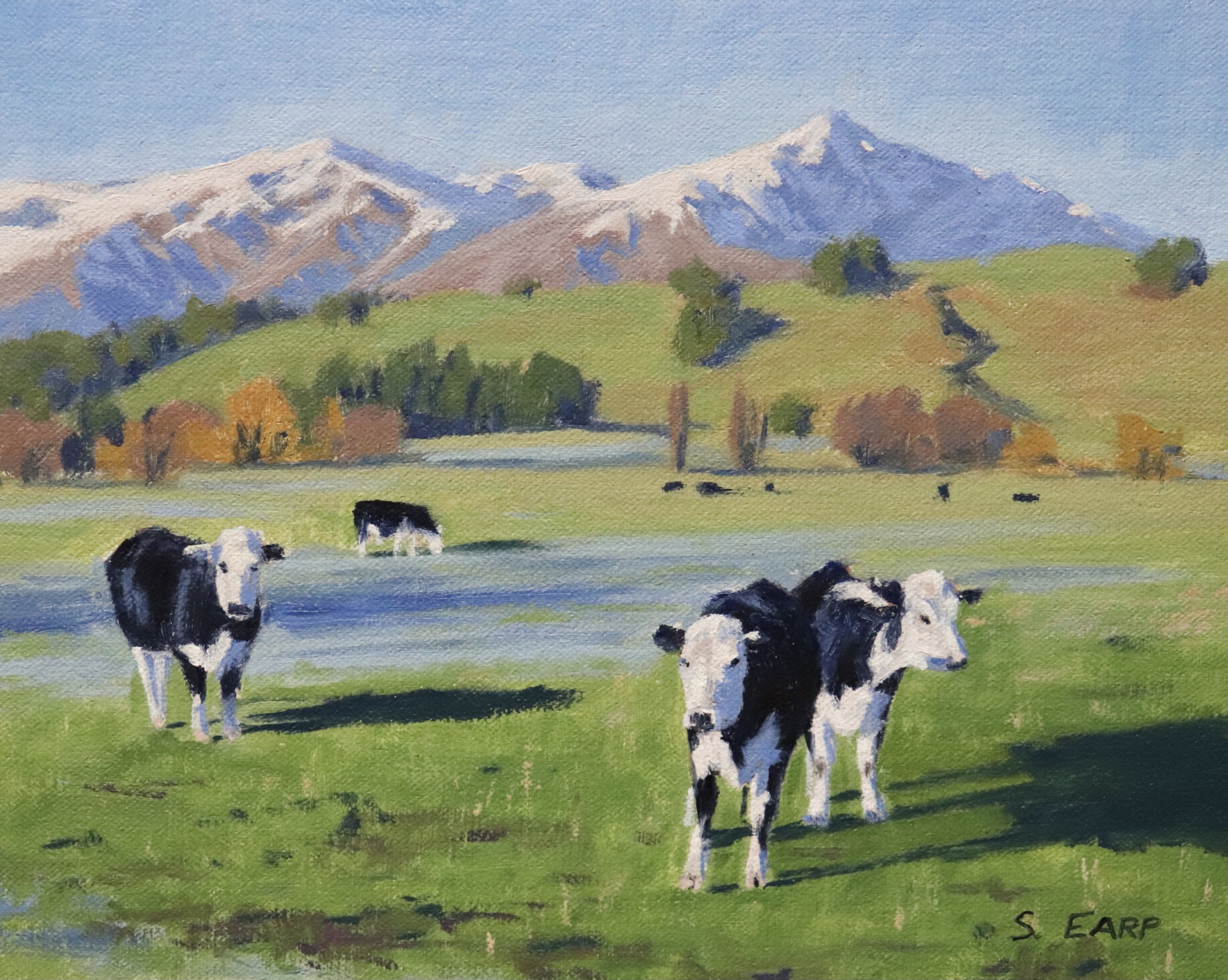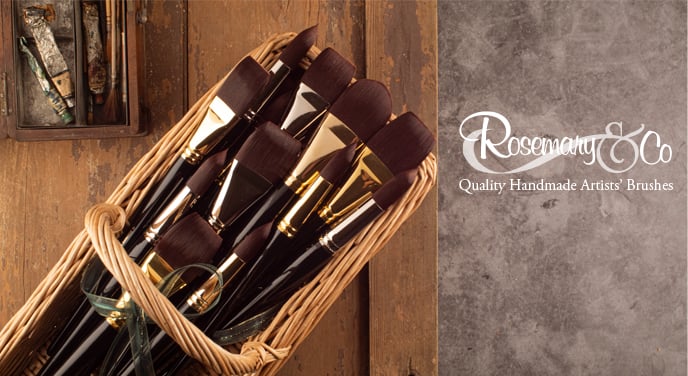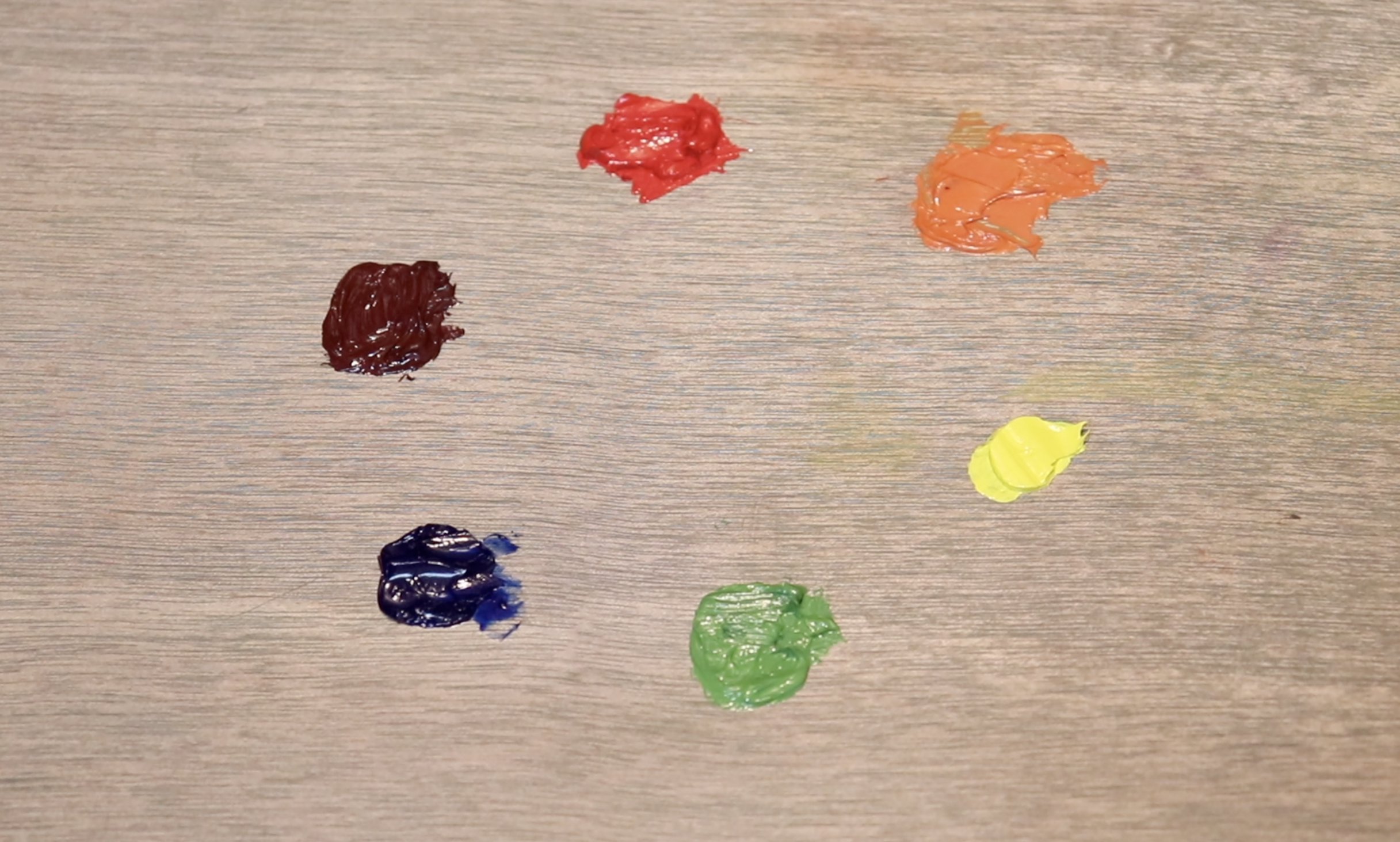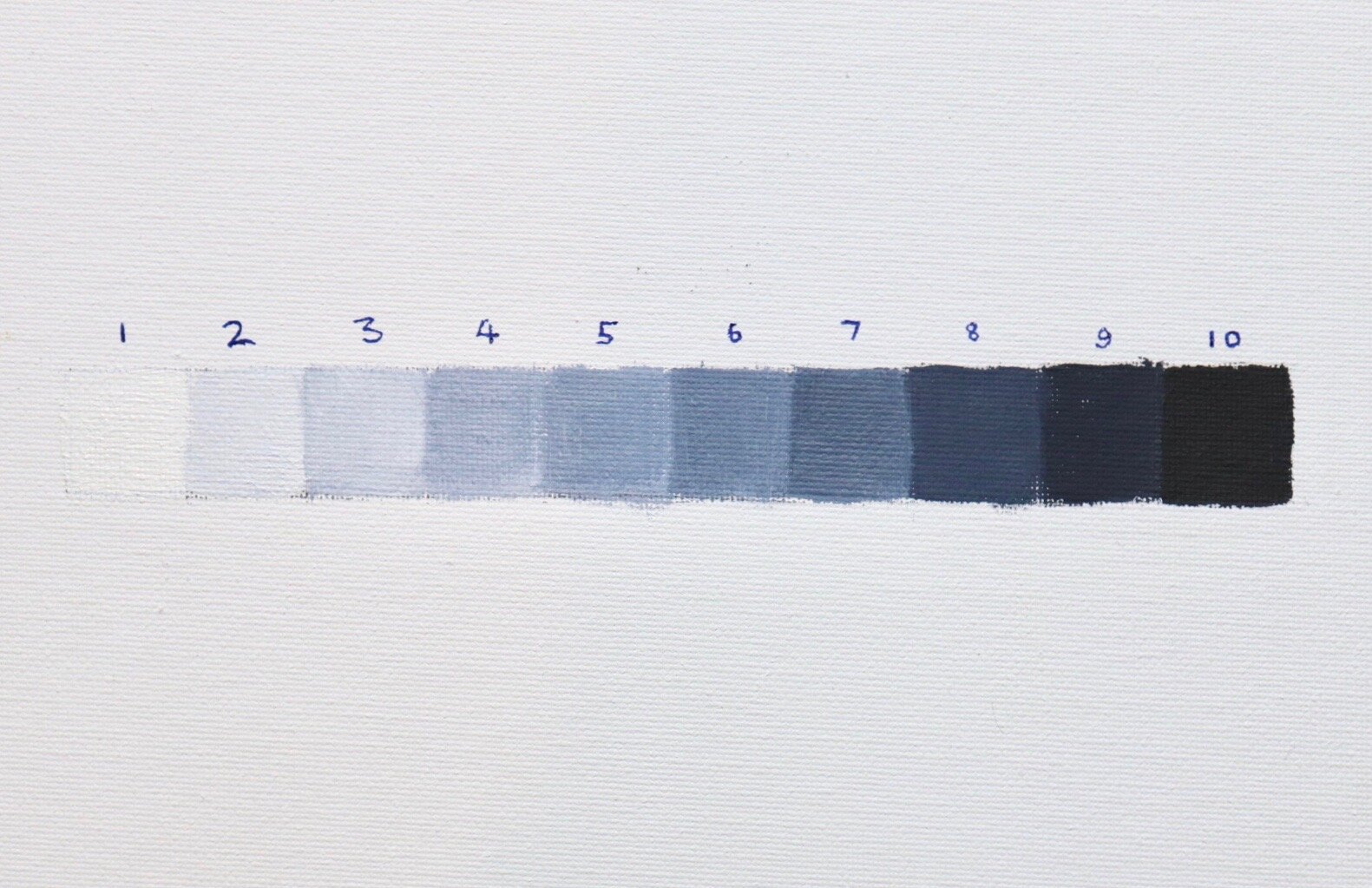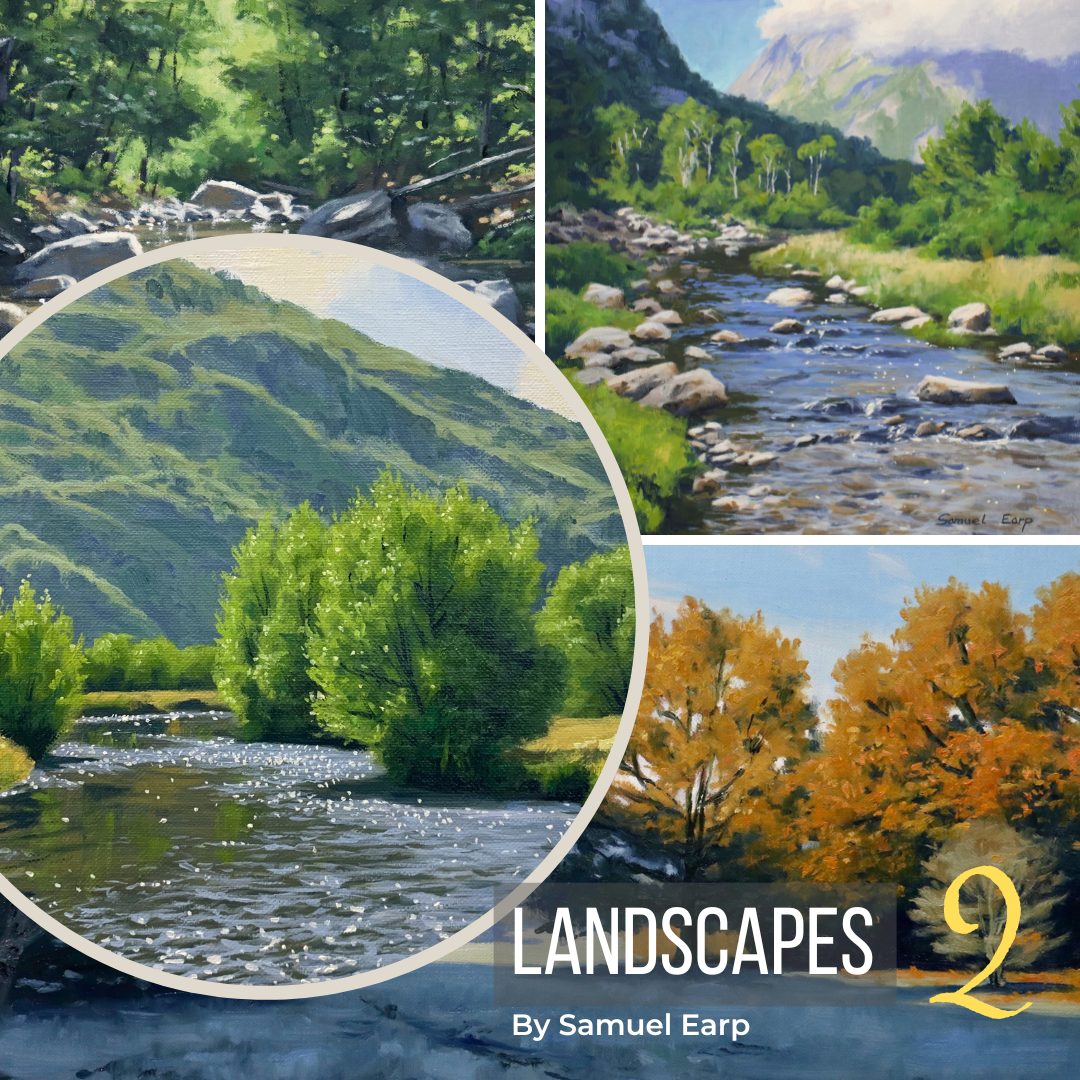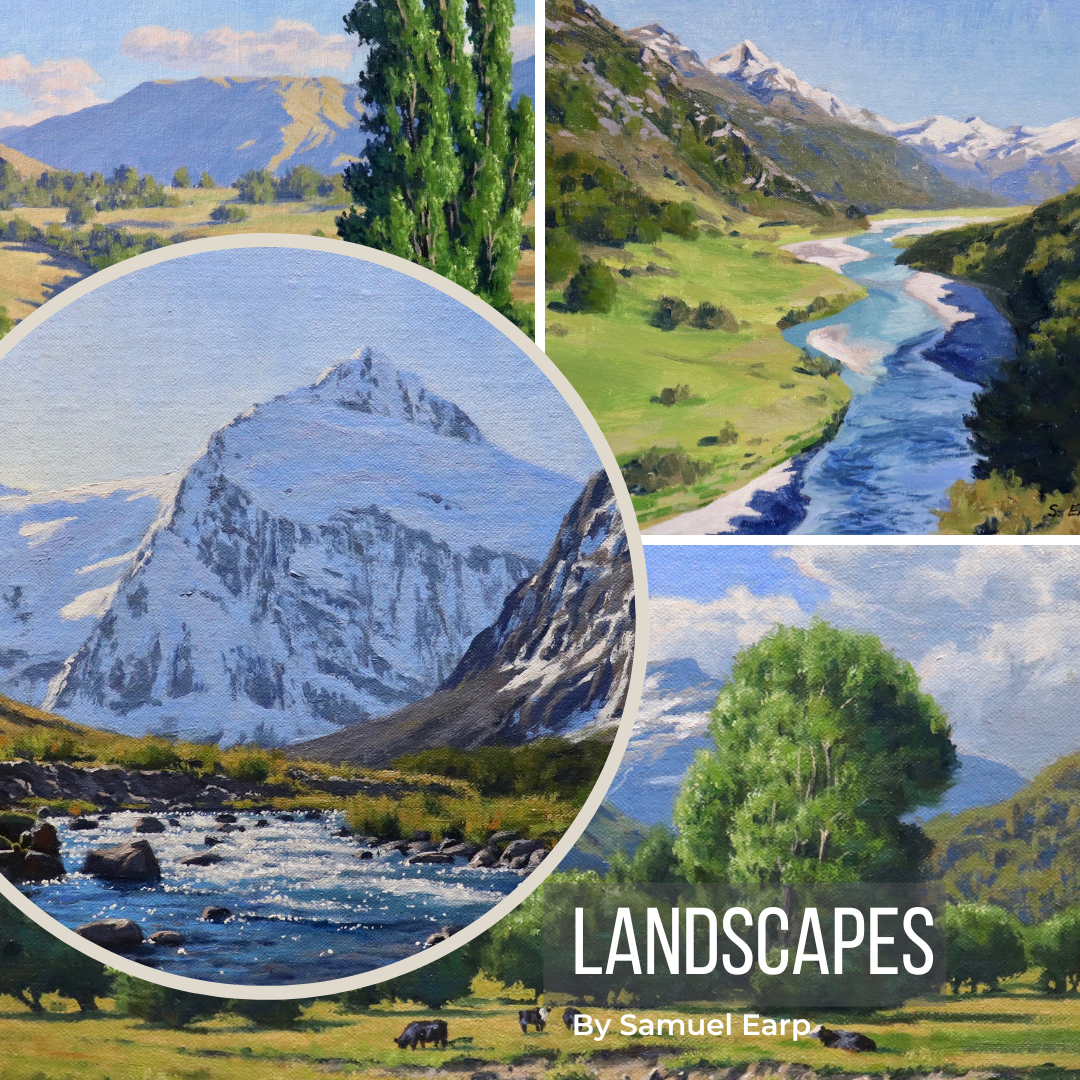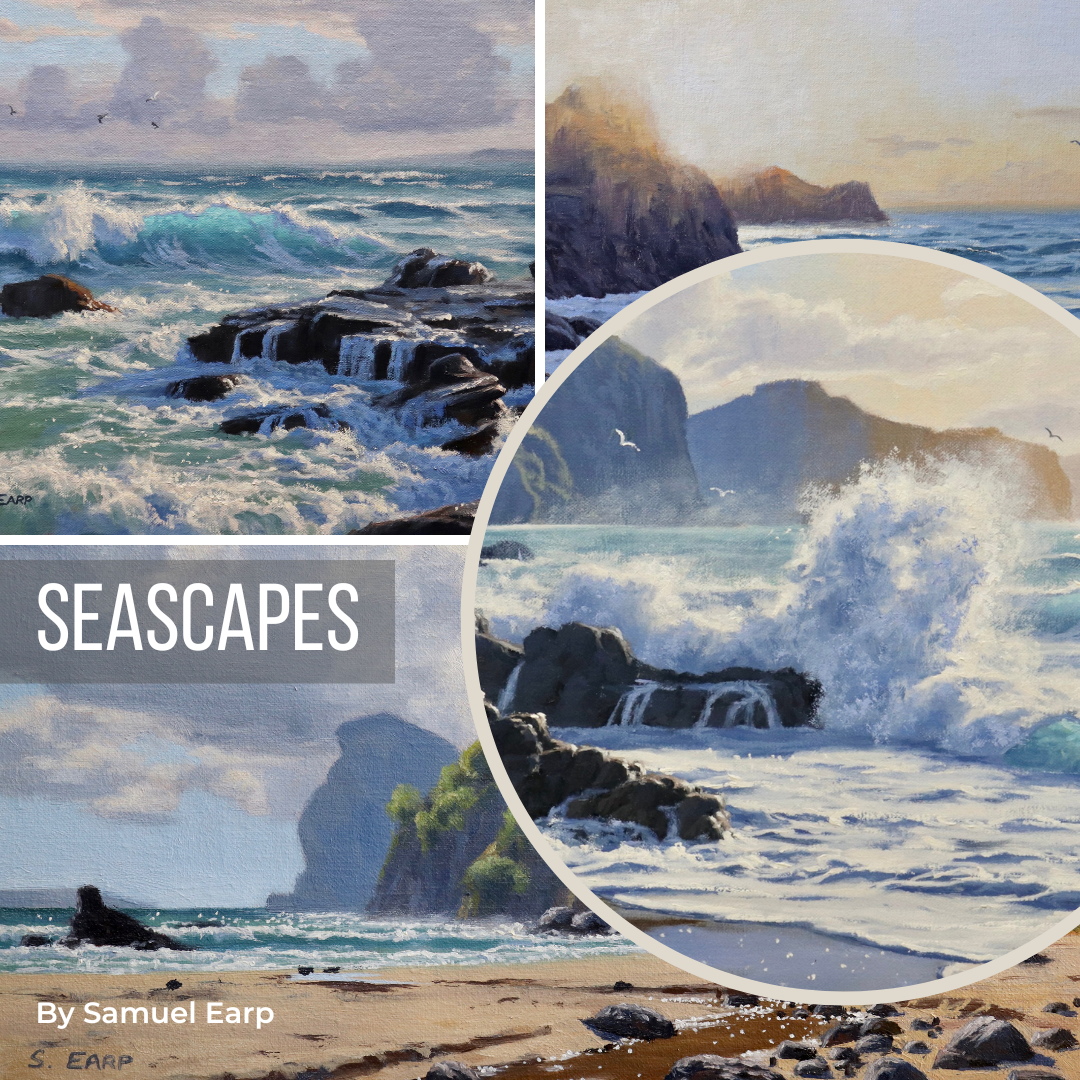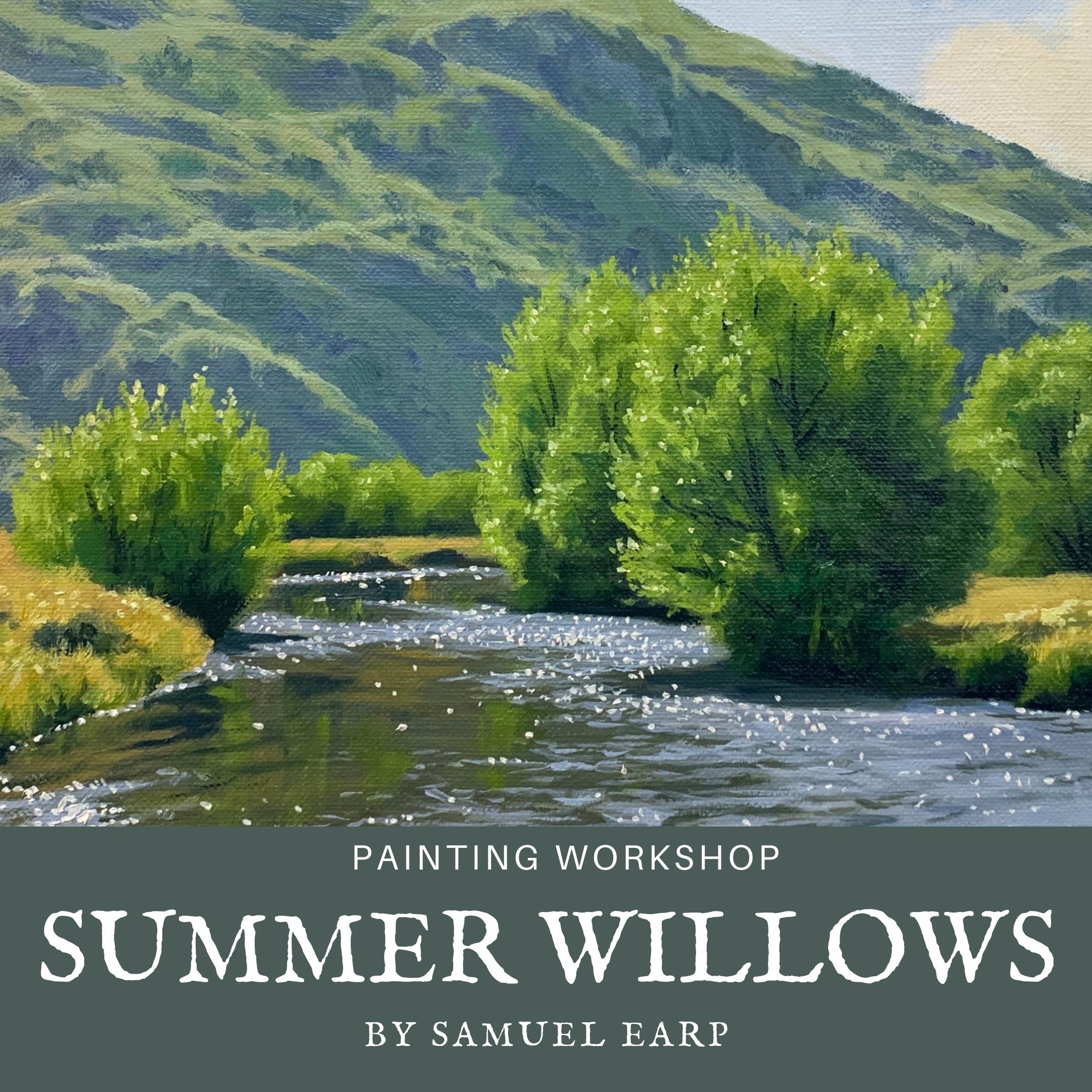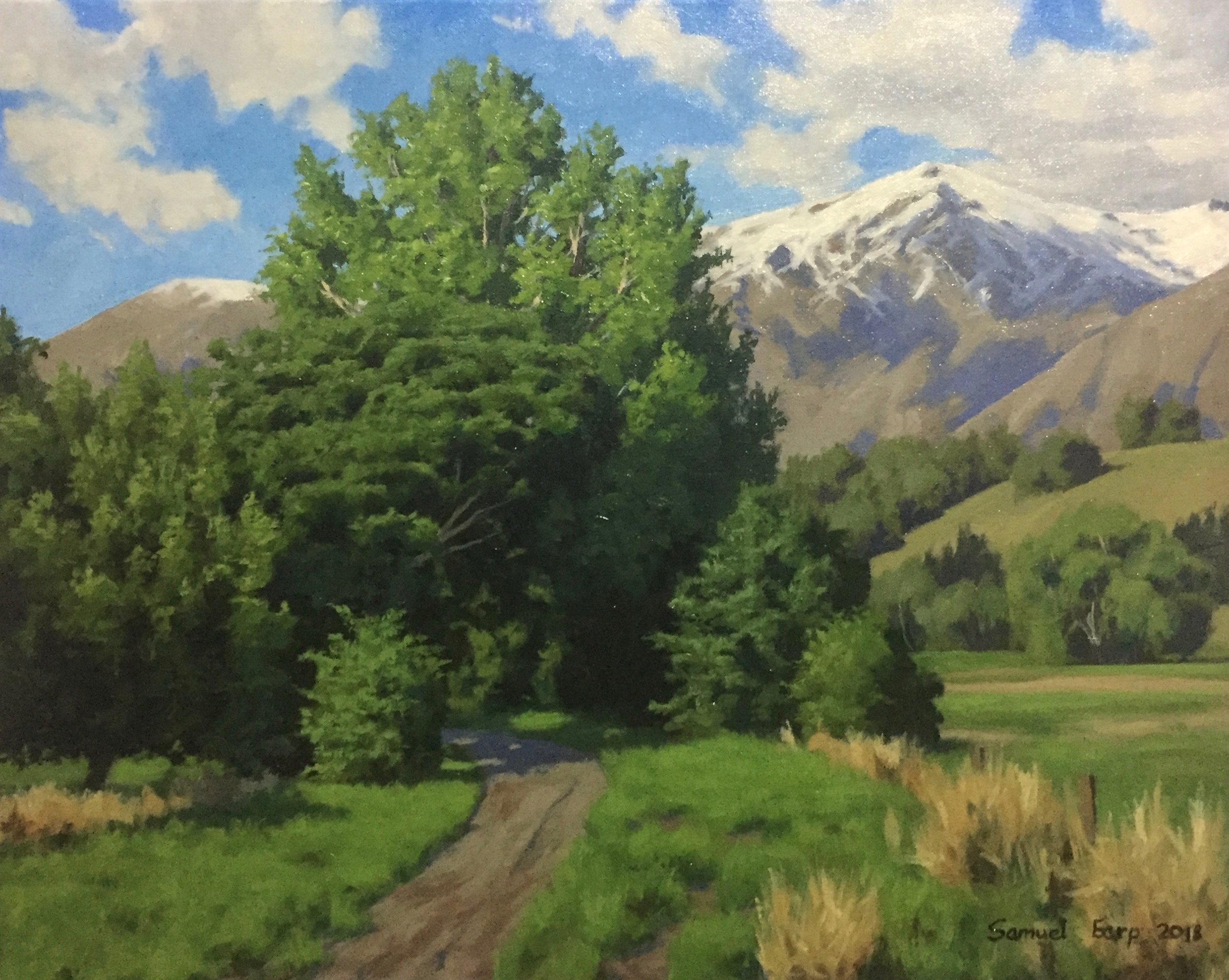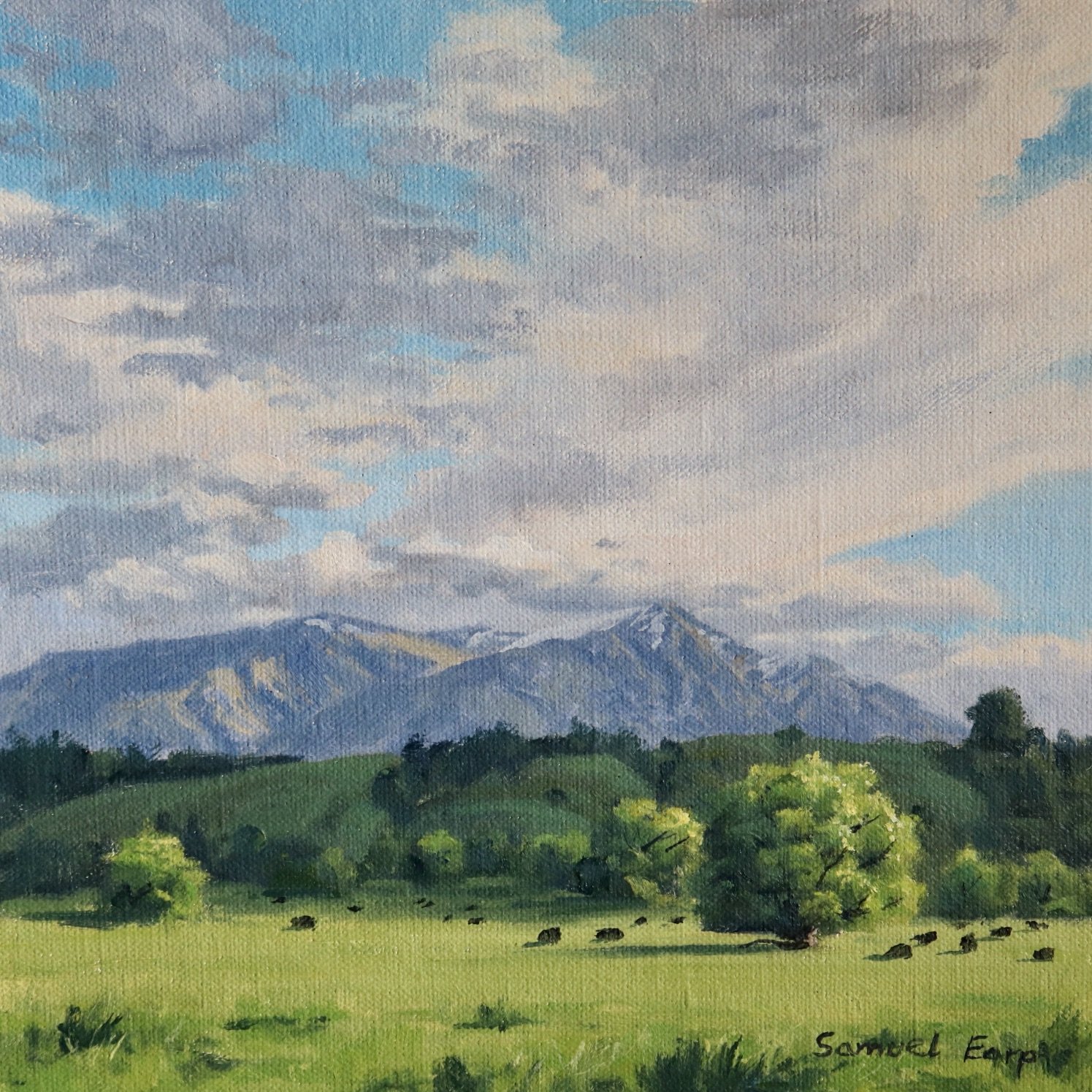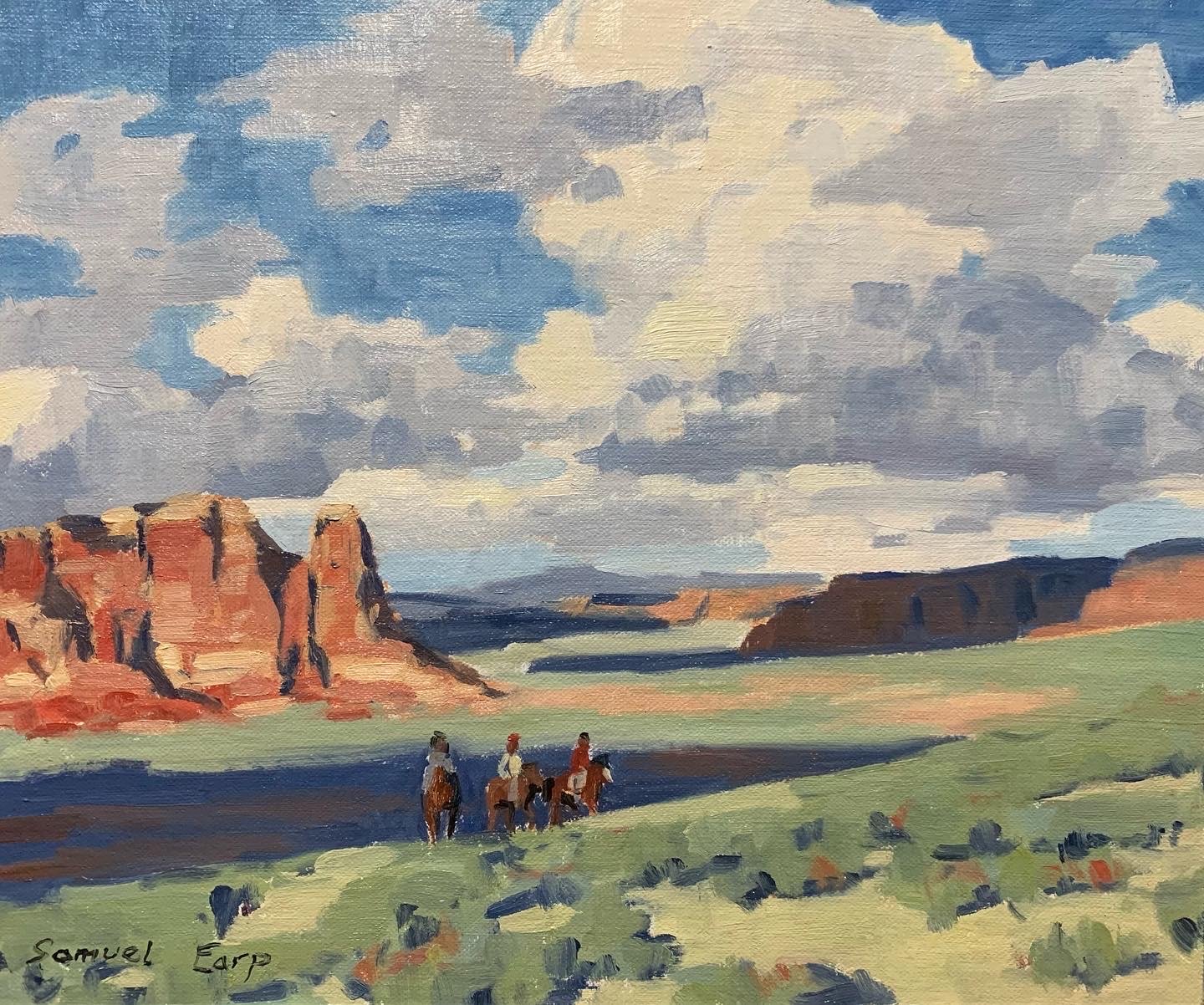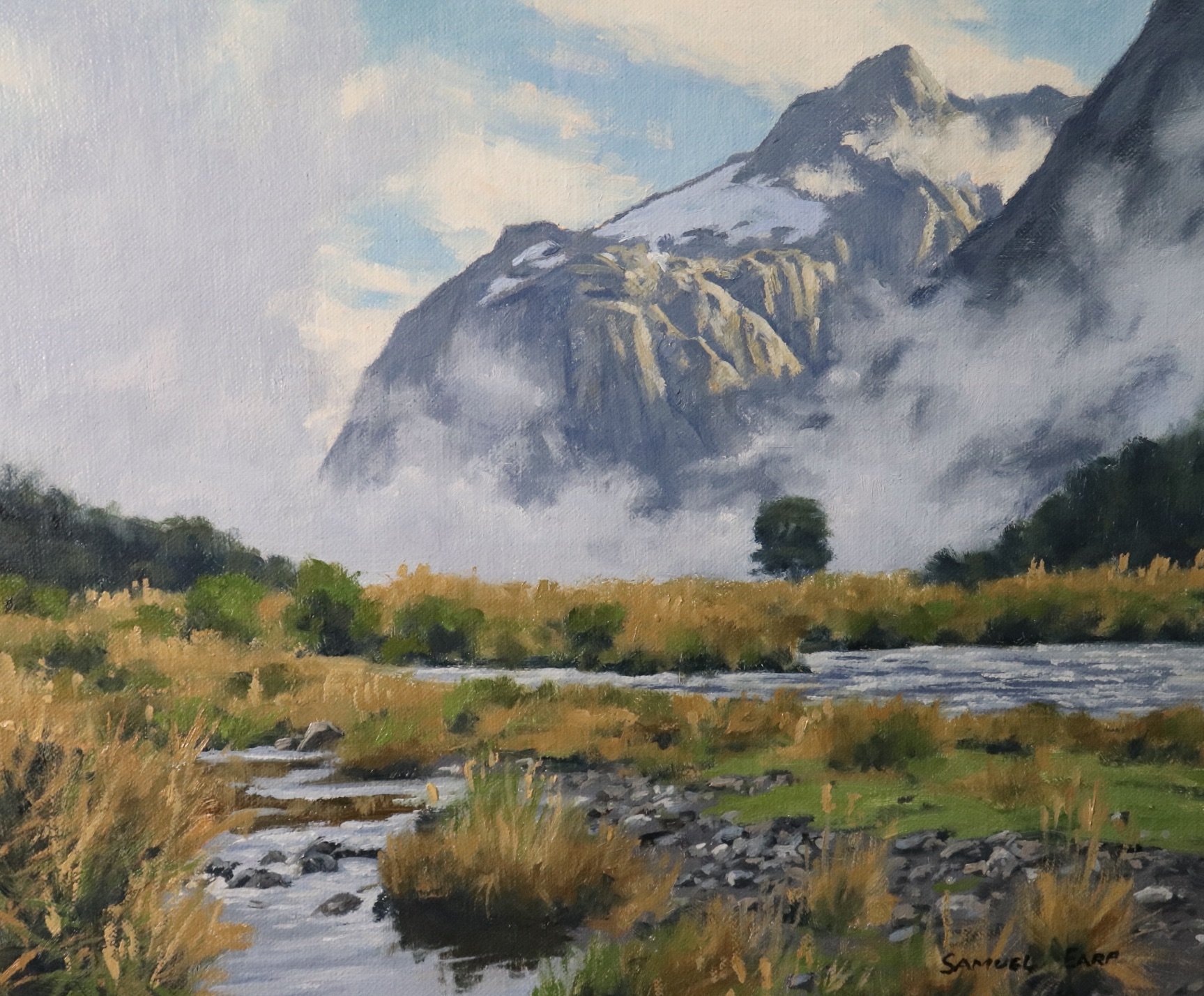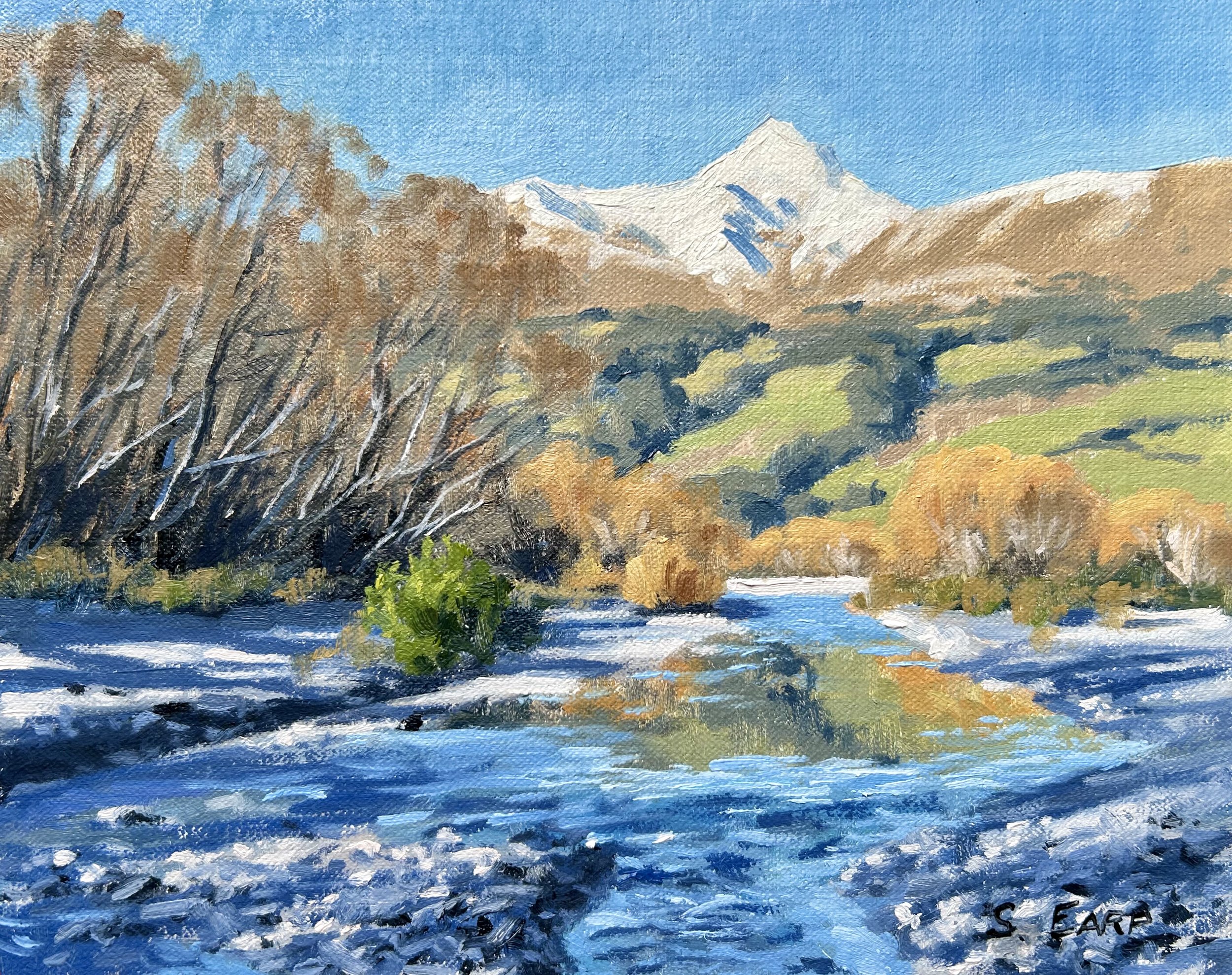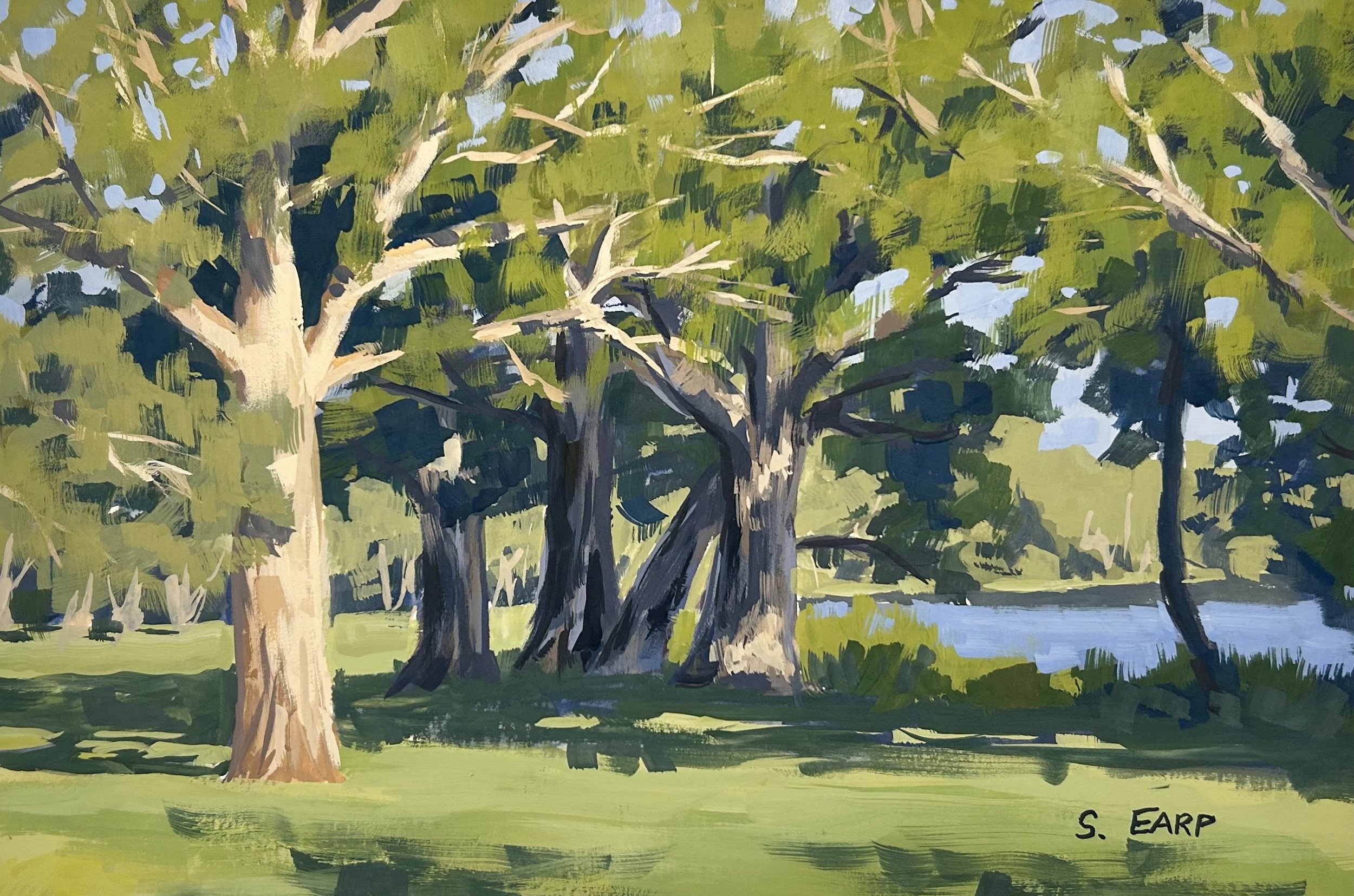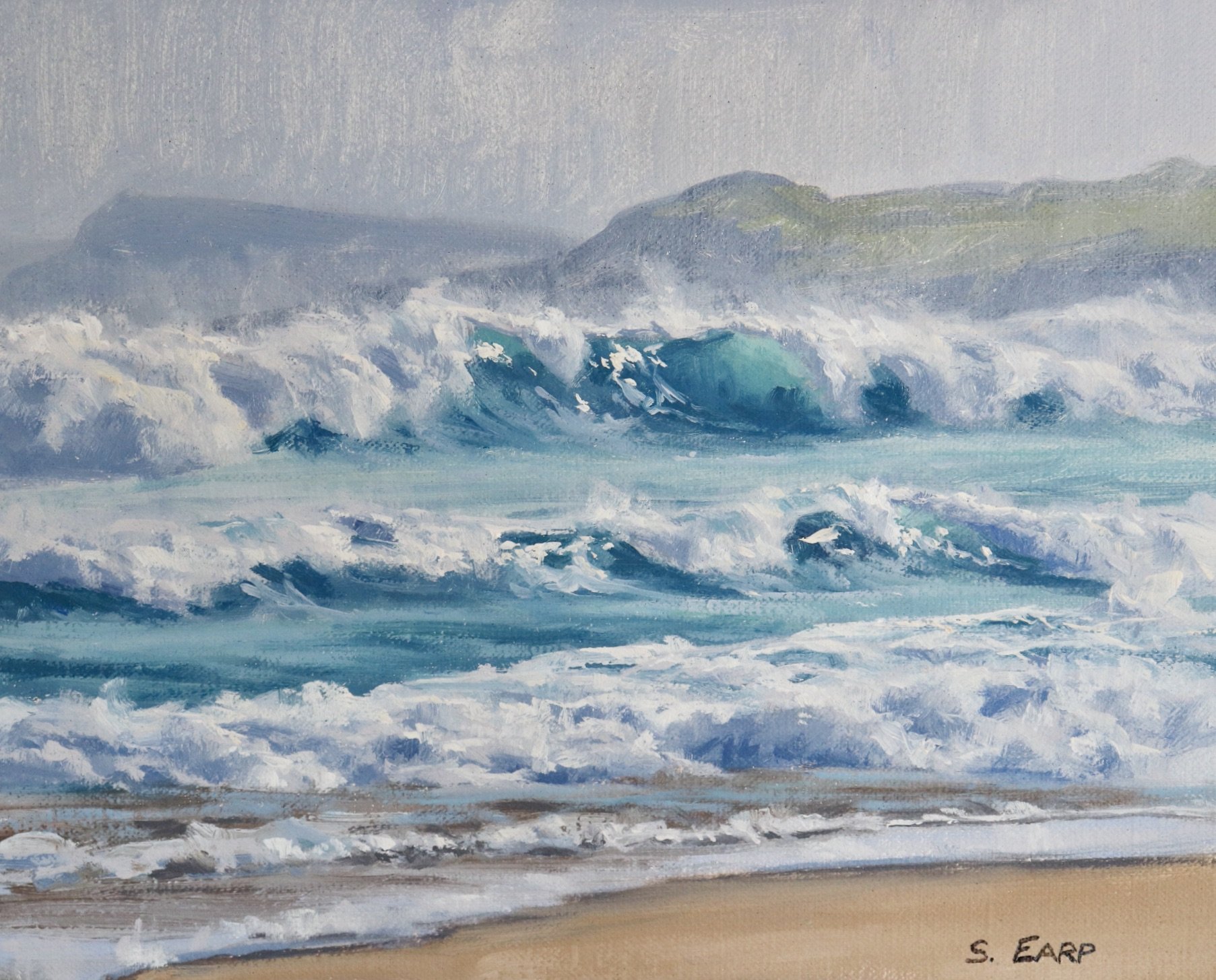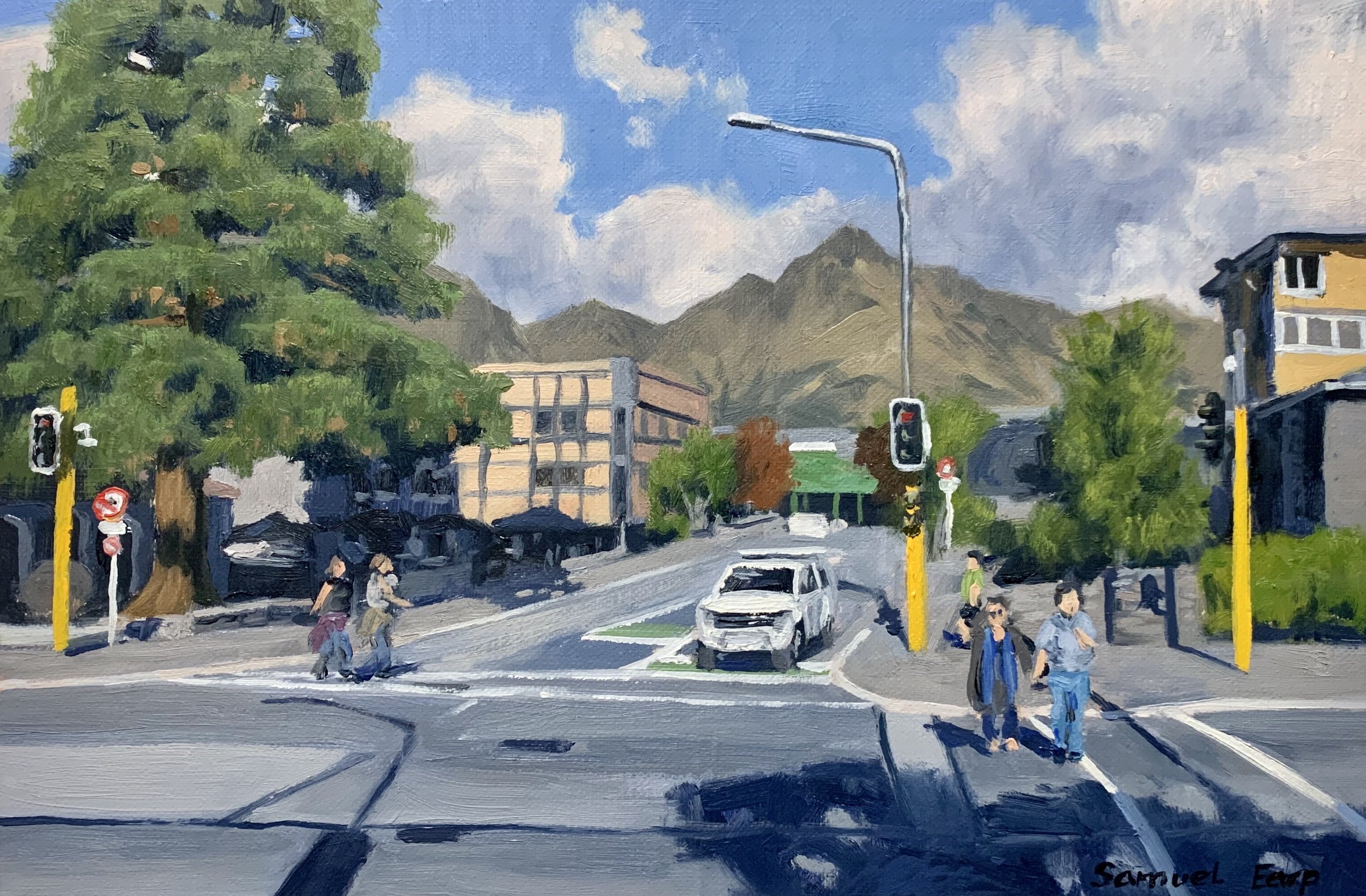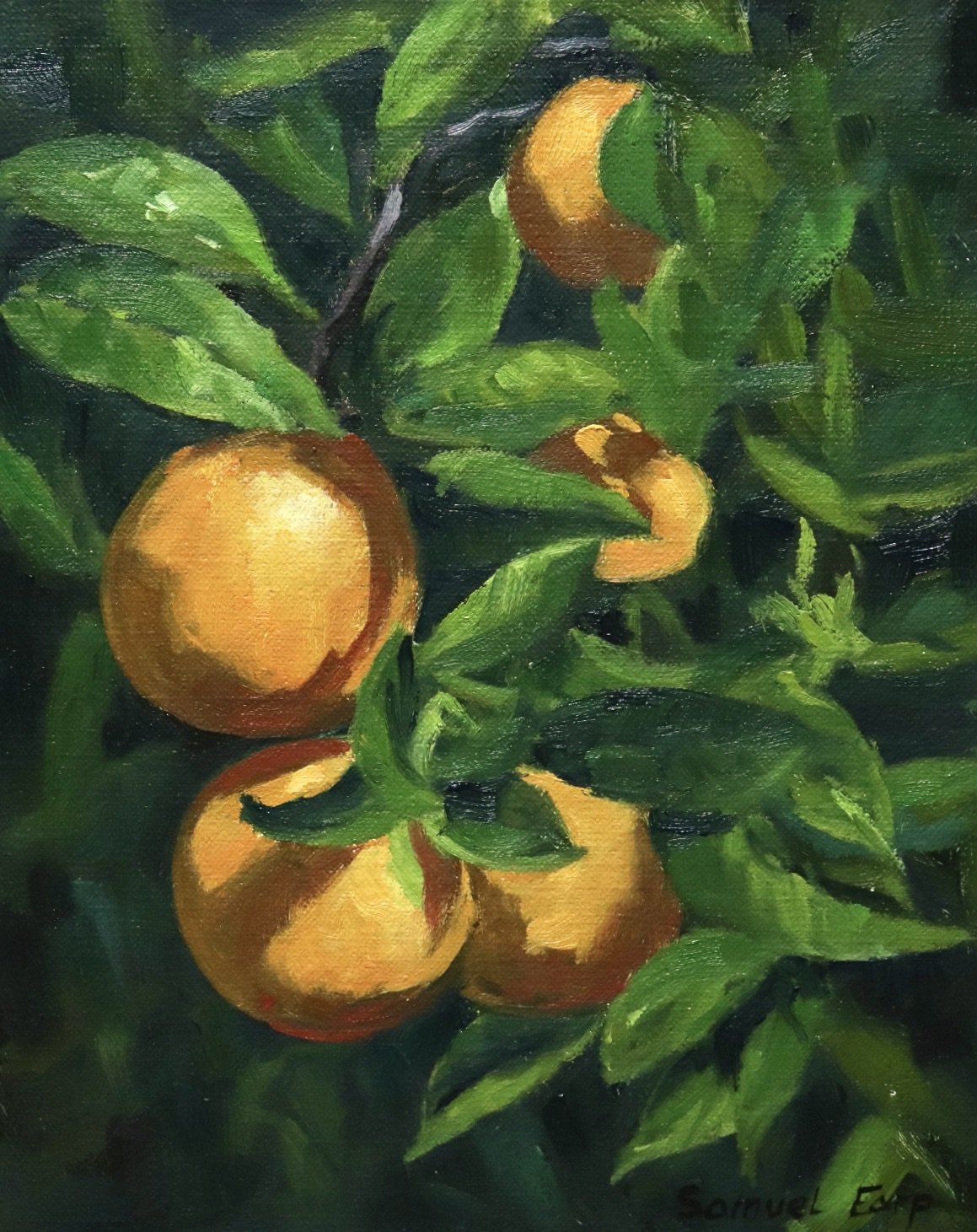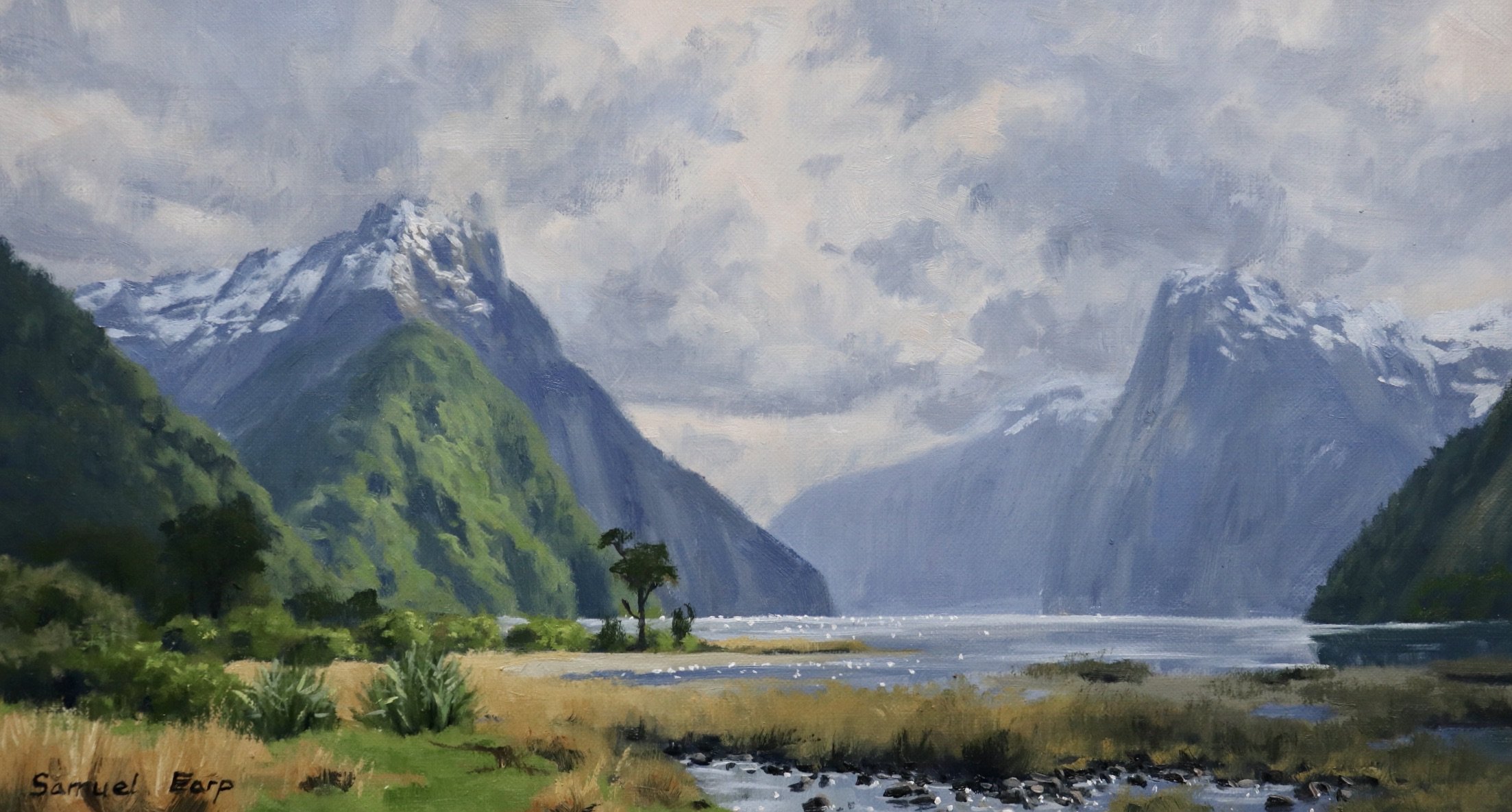Painting Workshop – Lesson Notes
Winter Cows
By Samuel Earp
In this written painting tutorial I will show you how to paint this frosty winter rural landscape that features cows in a field. Including animals in landscape paintings really adds life and atmosphere to a painting. Even just the suggestion of a few animals in the distance can make you painting look alive.
This painting is inspired by the Queenstown area in the south island of New Zealand.
Reference Photos
Here are some reference photo I took and used in this painting. Please feel free to use or copy these photos if you would like to have a go at painting this art work.
Colours
The colours I used in this painting are as follows:
-
Titanium white
-
Burnt sienna
-
Yellow oxide (you can also use yellow ochre instead)
-
Cadmium yellow
-
Cadmium orange
-
Quinacridone crimson (you can also use alizarin crimson instead)
-
Ultramarine blue
-
Phthalo green
Need Oil Paints?
I personally use Blue Ridge Oil Colors which are available here. If you would like to purchase Blue Ridge oil paints click the link below.
Brushes
Here is a list of the brushes I used in this painting:
-
No.5 flat
-
No.3 flat
-
No.2 flat
-
No.3 filbert
-
No.1 round
-
No.0 round
Need Brushes?
I personally use Rosemary and Co brushes which are available here. If you would like to purchase Rosemary and Co brushes click the link below. (Note: if you purchase Rosemary and Co brushes using the link below I will receive a small commission).
Painting Demonstration
I am painting on an 8” x 10” linen panel. The panel is pre made with a medium weave linen that is oil primed. These panels are perfect for creating small art works, studies and are also great to use for painting en plein air.
I sketch the composition using a No.1 round brush with burnt sienna mixed with Liquin Original (Liquin). I am using Liquin as a medium to thin the paint and it also has the advantage of speeding up the drying time.
I always begin my paintings by painting the dark values and shadows first. This helps to create a tonal dynamic in the painting that I can work from making it much easier to paint the areas in this landscape that are in light.
What Are Values?
As landforms recede into the distance shadows and dark areas become lighter in value. Value refers to how light or dark a subject is. We will find our darkest darks and our lightest lights in the foreground, but as landforms recede darks are not as dark and lights are not as light. By understanding this, it’ is much easier to create atmospheric depth in your paintings.
First of all here I paint the mountain shadows using a mix of ultramarine blue, burnt sienna, titanium white and a little quinacridone crimson. The frost in the foreground is a similar value and colour so I am able to use this same colour mix that I used for the background mountains.
Next I paint the shadows in the mid ground trees which are darker than the mountain shadows. I am able to use the same colour mix as the mountain shadows but I use less titanium white.
The cows fur is a near black and so I mix ultramarine blue and burnt sienna. As burnt sienna is a dark orange when it is combined with its colour opposite on the colour wheel, blue, it creates a near black.
Now that the dark values in the painting are established I start painting the areas of the landscape that are in light beginning with the furthest zone away in the scene which is the sky. The sky is a simple mix of ultramarine blue, titanium white and a small amount of phthalo green.
The slopes in the background mountains that are in the full sunlight are a pale earthy colour and is a mix of burnt sienna, ultramarine blue, quinacridone crimson and titanium white. I’m using more burnt sienna in my mix. Note how the colours I have used here are the same as the mountain shadows except the burnt sienna is more dominant. I am conscious to try and use common colours throughout my painting to create colour harmony.
Next I start working on the grass in the mid ground and foreground. The chroma or saturation of the grass is going to be lower in the mid ground compared with the foreground. It is essential to desaturate the greens in the mid ground hills a little bit so that the colours don’t jump forward in the painting.
I create a mix of yellow oxide, ultramarine blue, phthalo green and titanium white for the mid ground hills. I also mix in a little quinacridone crimson for some of those pinkish areas within the grass. This helps to create interest and texture.
As I work forward in the painting and move towards the foreground I use my existing green mix that I just made but I increase the saturation by adding cadmium yellow and a little more phthalo green. I round off the colour with a little cadmium orange.
Whenever I am painting large masses or areas I prefer to use larger brushes and in this case I used a No.5 flat brush.
I paint the trees in the mid ground field with a mix of yellow oxide, cadmium yellow, ultramarine blue and a little titanium white. I use more ultramarine blue in my green mixes here as trees are some of the darkest values to be found in the landscape.
The shadows in the cows white fur are a mix of ultramarine blue, burnt sienna and titanium white. I begin marking these in with a No.2 flat brush.
I paint the areas of the cows white fur in the full sunlight with a mix of titanium white and burnt sienna. Once I have established the main zones and colours within the cows bodies I then work the paint to get the proportions of the animals. In general I still wish to maintain a looseness and fluidity to the cows so it is in keeping with the rest of the landscape.
I use the same white mix that I used in the cows for the snow on the mountains.
I can paint around the negative areas of the cows, the grass, so I can make further corrections to the cows proportions. I then start adding further details to the cows and it is here I am using smaller brushes, mainly No.2 flat brushes and No.0 round brushes.
I finish the painting by adding finer details to the cows. I also make sure the shadows that are being cast by the cows line up to their hooves. The shadows in the grass are a mix of ultramarine blue, yellow oxide and titanium white. The shadows are very important because they help to create the overall three dimensional effect in the painting.
I add more texture to the grass and also some area of mud and dirt which is a mix of burnt sienna, quinacridone crimson, ultramarine blue and titanium white.
I paint the snow that is on the shadow side of the mountains with a mix of ultramarine blue, quinacridone crimson and titanium white.
I add some final details such as the suggestion of cows in the background.
Colours and Values
Throughout the video you will hear me talk about colours and values. It is important to have a basic understanding of colour theory and values when painting as it will make colour mixing easier for you. Luckily it’s easy to learn the basics and the rest is just brush mileage.
Colours Theory Terms
Below are some terms I use throughout the video and their meanings.
Hue: This refers to the main attributes of a colour and is dependent on its dominant wavelength, irrespective of how light or dark the colour is. For example, the colour is discernible as blue or a red etc.
Saturation or Chroma: This refers to the purity or intensity of a colour. You can reduce the saturation of a colour by adding a neutral grey or an opposite colour on the colour wheel.
Value: This is how light or dark a subject is. Getting your values correct is one of the keys in the success of a painting.
Tone: This is a broad term for describing a colour that is not a pure hue or black or white. It is a widely misunderstood term.
The Colour Wheel
For the benefit of people who are new to painting that are watching this video I will briefly go over the basics of the colour wheel. Knowing how the colour wheel this works can really help you with colour mixing.
Above is a simplified colour wheel. The colour wheel contains three primary colour blue, red and yellow and three secondary colours orange, green and violet.
When these colours are arranged on the colour wheel a primary colour is always opposite a secondary colour and are known as compliments or complimentary opposites. So, blue is opposite to orange, red is opposite to green and yellow is opposite to violet.
So why is this important?
If you want to desaturate a colour you can do this by mixing its complimentary opposite as the two colours will cancel each other out. In this manner you can create some neutral greys and browns especially when combined with white.
Complimentary colours also look good next to each other in a painting, for example greens often look more harmonious in a landscape if there are some reds amongst the mix or colours that contain red. If you look closely in nature, you’ll see naturally occurring complimentary opposites everywhere.
The Value Scale
Value is how light or dark a colour is and is perhaps one of the most important concepts in painting. The success of a painting rests on the relationship between the values in the painting. If they are not working and not in harmony, then the whole painting can lack any kind of depth.
Values in art work are represented on a scale with the highest value being white and the lowest value being black. The greys in between are known as mid or half tones.
In general, you will find your darkest darks and lightest lights in the foreground of a landscape. However, as landforms recede into the distance darks are not quite dark and lights are not quite light as the tonal scale narrows.
If you are unsure of where your light and dark values are in the scene you are painting, switch your reference photo to black and white and you’ll be able to clearly see where your light and dark values are.
In general, you’ll find that the sky is often one of the lightest values in the landscape. Grass is also generally lighter in value. Rocks and mountain faces are darker in value and often occupy the mid-tone range of the value scale. Trees are generally some of the darkest values in the landscape.
New Painting Video Every Month on Patreon
Subscribe to my Patreon channel and get instant access to all of my painting videos and get a new video every month for just $5 per month.
More Painting Tutorial Videos Available
